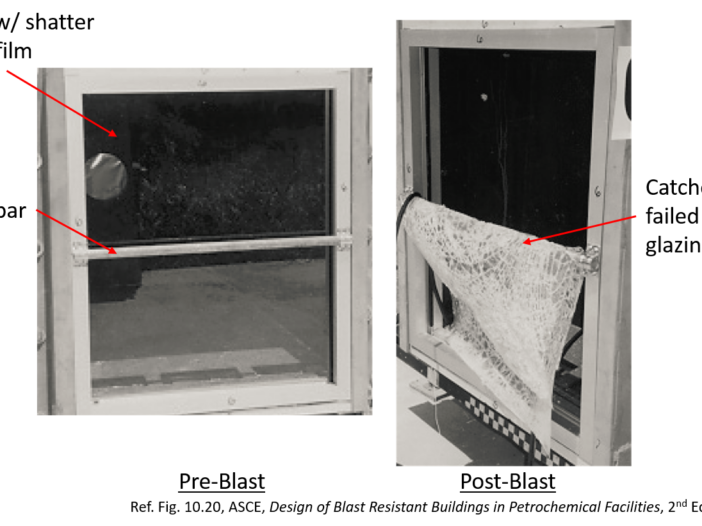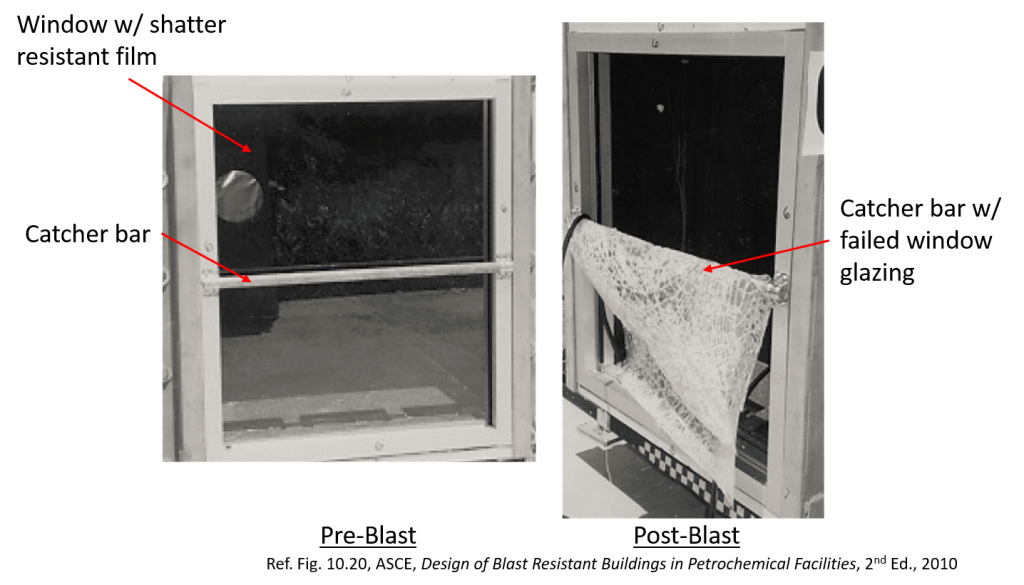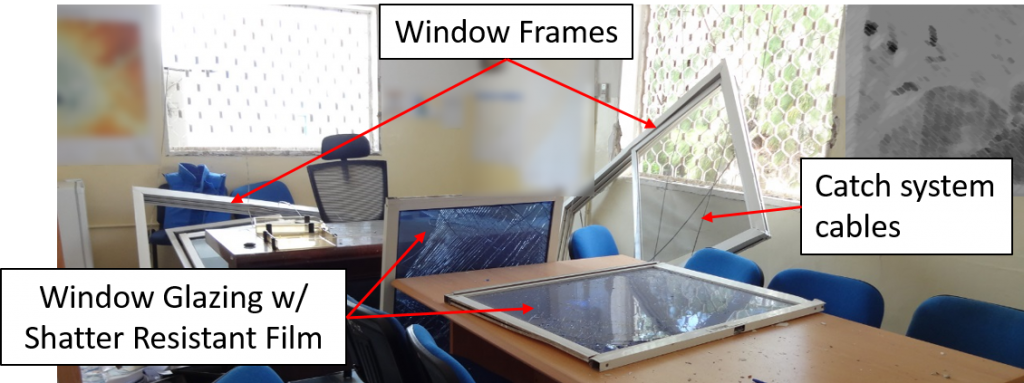
When leasing space in or buying an existing building, chances are that the building was not designed and constructed with blast resistance and protection in mind. As such, buildings located in high threat environments (see our previous post) most likely require some type of blast resistant retrofits.
The scope and selection of retrofits varies depending on the type and size of the threat. However, the basic concepts underlying the majority of blast resistant retrofits are simple and generally fall into one of the following categories:
- Vacate the premises and move personnel to a more secure location,
- Keep the threats as far away as possible from the people and buildings,
- Install specially designed systems to catch hazardous debris,
- Upgrade the capacity of structural members to reduce the amount of hazardous debris,
- Upgrade connections securing building elements to each other (tie the building together better).
- Protect the building using a shield structure,
- Position personnel away from hazards within the compound and within the buildings, or
- A combination of the above approaches.
An example of this can be seen in window retrofits. Most existing windows are not designed to resist blast loads and can create significant flying glass hazards to people, in the event of an explosion. These existing windows require upgrades to reduce hazards to people who are occupying the buildings. One retrofit approach is to install Shatter Resistant Film (also known as Blast Film or Anti-Shatter Film) to the inside face (protected side) of the window glass. While this is a good first step, it really only provides a baseline of protection. Where the threat is larger, the distance to the threat is smaller, or the amount of required protection is higher, the film can be combined with a catch system to provide additional protection. There are many types of catch systems for windows, two typical systems are horizontal catcher bars or vertical cables. See the figure below for before-and-after photos of a window with film and a catcher bar.
In looking at these photos, you can see significant damage. At first glance, this may seem to be a failure of protection. However, in many instances, this would be considered to be successful protection. Why? The Post-Blast photo shows that the shatter resistant film has held the shattered glass together as a single sheet rather than multiple shards that could cause serious injury. Additionally, the catcher bar has stopped the glass/film sheet from being thrown into the protected space. Thus, the hazard is isolated to the area directly in front of the windows and the potential for injury has been greatly reduced.
Another retrofit concept to remember is that when upgrading a building element (i.e., a window, a door, beams, etc.), the capacity of the connections and structure supporting that element must also be checked to ensure that they can resist the blast loads. The system is only as strong as its weakest link.
For example, if the glass of an existing window is strengthened to resist a specific blast load, but the existing connection between the window frame and the supporting wall is only designed to resist conventional wind loads the weakest link has been moved from the glass to somewhere else. In this example, if an explosion occurs, the glass might not fly out, but the window frame might break free from the structure and fly into the room. Below is a picture of a room after a blast event.
In this case, the existing windows were retrofitted with shatter resistant film in combination with a catch system consisting of cables spanning the full floor-to-floor height, at the interior side of the windows. The blast caused the glass to break, but not shatter. However, the anchors connecting the window to the wall failed, and the entire window frame was thrown into the occupied area. Fortunately, the catch system was able to stop the frames before they could fly very far into the room. As a result, the hazard was isolated to the area near the windows. This also highlights the importance of personnel location during a blast event. Hazards can be significantly reduced by locating people away from exterior walls and windows.
For information like this, and more, check out our upcoming face-to-face course: Protective Knowledge – Protection in High Threat Environments. This course is being offered in New York City from May 23 – May 25, 2016, and is focused on security and design professionals, owners, and contractors who work in high threat environments.


